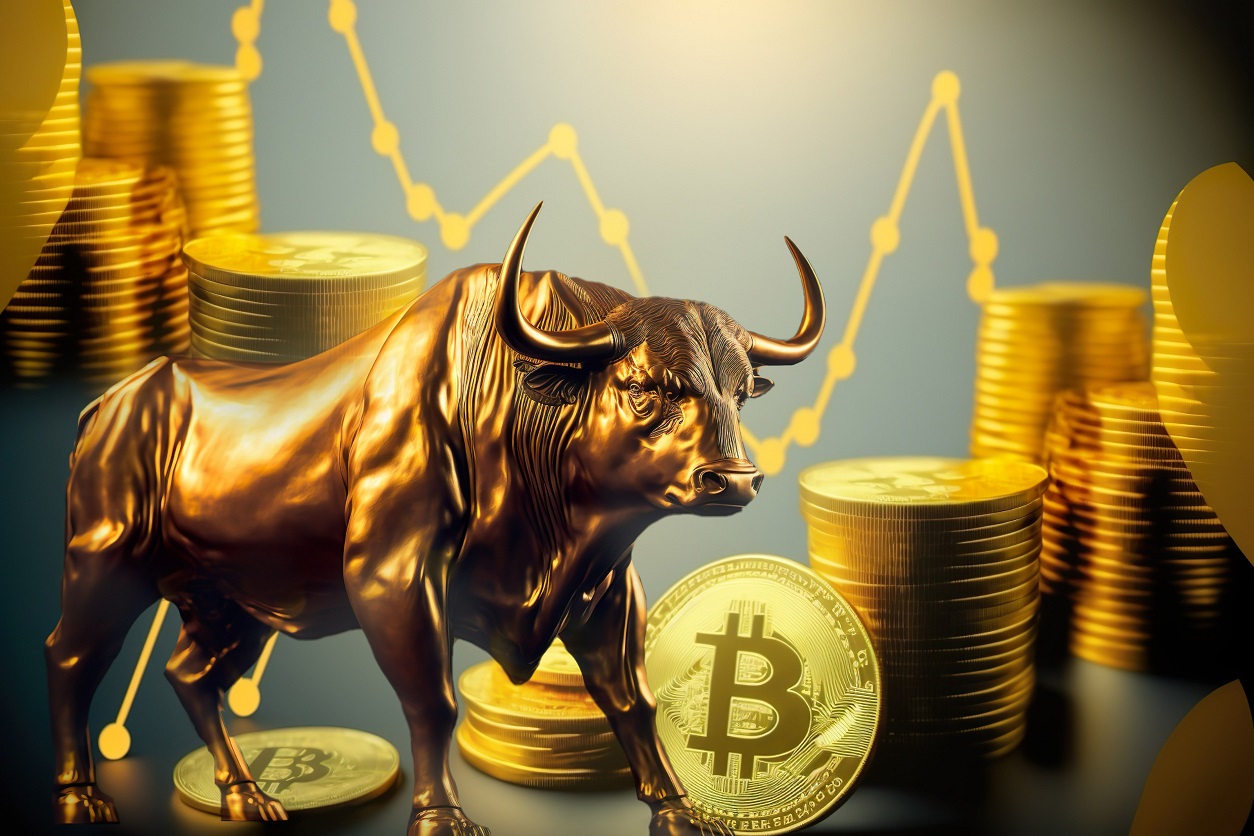
Key Takeaways
- Crypto banks best January in nearly a decade
- 68% of the Bitcoin supply in profit, compared to 50% at the start of January
- Correlation between Bitcoin and risk assets is close to all-time highs, with Federal Reserve’s interest rate policy continuing to hold the key
It’s important to celebrate the wins, huh? And wow, did crypto investors need a win. Following a year filled with bankruptcies, arrests, layoffs and red charts, the new year has got off to a nice little start.
In fact, January is crypto’s best month since 2013. Let’s dig in and look at summary statistics from the banner month, and get the lay of the land as we turn the page into February.
Funding rate positive
Opening the month at $16,600, Bitcoin closed out January trading at $23,100 for a cool 39% gain.
The funding rate is the price which traders pay to either long or short an asset on the futures market. If the funding rate is positive, it means long trades are dominant and long traders are paying short traders for positions. The vice-versa also holds, meaning a negative funding rate implies short traders are paying long traders.
This means that, while far from perfect, it is a decent gauge of market sentiment. Looking at the rate throughout January, it was positive on all but two days, as bulls ruled the roost.
Bitcoin traders are back in profit
The best way to sum up the fortunes of the crypto market this month is to look at the amount of supply in profit. Things ended pretty acrimoniously last year, with half of the 19.3 million circulating supply of Bitcoin in profit.
Fast forward 31 days and this figure is now up at 68%.
Road back is long
Of course, I wrote only yesterday about how severe the damage caused in 2022 was. This is not the case of a little tender care flipping the fortunes of the market around. The industry is still besieged by bad news, with layoffs and bankruptcies far from over, if the past couple of weeks is anything to go by.
Crypto, more than ever, is simply following macro. There is nothing else causing this rally. And with the US Federal Reserve meeting this afternoon to outline its latest interest rate policy, the bounce could be reversed pretty quickly, or even boosted further, depending on the words of chairman Jerome Powell.
Correlations remain sky-high
Don’t take my word for it. A quick look at the correlations at play here shows quite how much Jerome Powell is holding Bitcoin’s hand.
There’s an irony in there somewhere; a legion of crypto traders waiting nervously on the words of the chairman of a central bank to discover where Bitcoin, and the rest of the market, is headed. What was that about a hedge narrative?
And if the correlation between the market and Bitcoin was steep, you can bet your bottom satoshi that its even higher between Bitcoin and the rest of the market. Ever since we transitioned into this new era of increased interest rates around April 2022, the Fed has been holding Bitcoin’s hand ever tighter, and Bitcoin has been holding the hand of every other crypto.
Final thoughts
It’s been a stellar month for crypto, throwing up memories of the explosive runs it was capable of back in the good old days of the bull market.
With the Federal Reserve announcing its latest interest rate policy this afternoon, markets could show volatility, with impetus to this latest rally, alongside an abrupt curtailment, both on the cards depending on the tone that chairman Jerome Powell strikes.
In the long-term, the space is still reeling from the numerous negative events of the past year, and Bitcoin trading like a levered bet on the Nasdaq is far from ideal.
Despite fundamentals appearing similar to a commodity, and big dreams about the future, Bitcoin remains a highly speculative asset for now. And as for the rest of the crypto? Just copy and paste the Bitcoin analysis, while ramping the volatility up a notch (or three).

